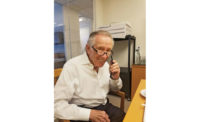Is There A Doctor in the House?
Commentators have described mold litigation as the �next asbestos� for years. In many states, however, mold litigation has not earned that label as plaintiffs have struggled to get expert medical testimony into evidence.
Virginia is a conservative jurisdiction, but recent developments in the state may point to the reinvigoration of mold related personal injury claims. In a recent case, the plaintiffs were able to present their medical and other evidence to the jury. The result was a very large verdict that may inject mold litigation regionally with fresh life.

HUGHES
Changing Tide? Plaintiffs have struggled in Virginia to introduce medical evidence of personal injuries relating to mold. For example, in Roche v. Lincoln Properties, a defendant property manager successfully requested the court to bar the plaintiffs’ medical experts from testifying. The defendant argued that the plaintiffs’ medical experts lacked a proper scientific foundation and the court agreed.
In a more recent case in Richmond, Odaris v. Thalheimer, Inc., a defendant again successfully defended a mold case by blocking the plaintiff’s treating physician from testifying as to the connection between exposure to mold and their claimed personal injuries. Following an appeal, the Supreme Court of Virginia found it was error to exclude the doctor in 2008.
Recent Virginia Case In Meng v. The Drees Company, a husband and wife purchased a $900,000 home in 2005. They alleged that the builder did not allow the house to properly dry prior to drywall and insulation installation and that improperly installed windows leaked. Plaintiffs asserted this led to excess moisture and mold growth.
The wife claimed she began to suffer serious migraine headaches several months after moving into the home. She alleged she was bedridden for weeks at a time and sought treatment seven times over the period of 2006 and 2007. After tests disclosed the presence of mold, the family moved out in April 2007. Plaintiffs asserted that the wife continued to suffer health impacts from the exposure to mold until she underwent a month-long detoxification program in September 2008. In this case, the judge allowed the treating physician to testify to the jury.
The defendant raised a number of substantive issues regarding the testing and finding of mold in the house. In particular, the defendant argued that the mold, if any, was encapsulated into the wall space until the plaintiffs opened up the walls and that there was no evidence of mold in the living space. The defendant argued further that there was no evidence of ongoing moisture problems.
In addition to the purely medical side of the case, the plaintiffs had various misrepresentation and property condition related claims. The plaintiffs claimed that they had to dispose of $100,000 worth of personal property that they claimed was infested with mold. They claimed further that the cost of removal and/or repair of the damaged elements of the home would cost another $400,000. The plaintiffs incurred roughly $30,000 in medical fees. Finally, the plaintiffs alleged that there were either intentional or negligent misrepresentations by the builder prior to purchase of the home that some of the water-related problems had already been repaired.
The Result The plaintiffs prevailed at trial. On the wife’s personal injury claim, she won $2.276 million. The husband further won $500,000 on his negligence claim. In addition, the jury awarded the plaintiffs $1.474 million for constructive fraud on the alleged misrepresentations and $500,000 for violation of the Virginia Consumer Protection Act.
The defendant asked the court to set the verdict aside. In reaction to post-trial motions, the trial court set the verdict aside and entered judgment for the defendants on the constructive fraud and consumer protection claims. The court found that the representations alleged would not support the claims and that the sole remedies for those claims were based in contract. Finally, the court ordered a reduction in the negligence verdicts to $425,000 for the husband and $975,000 for the wife, or in the alternative a new trial.
The case is on appeal to the Supreme Court of Virginia. While the final result may be in doubt, this case sends a warning message to the building community. Mold claims can be difficult to maintain in the face of scientific and legal challenges. Nevertheless, under the right circumstances, mold-related cases can present serious damage exposure to defendants if the medical evidence gets to the jury.


